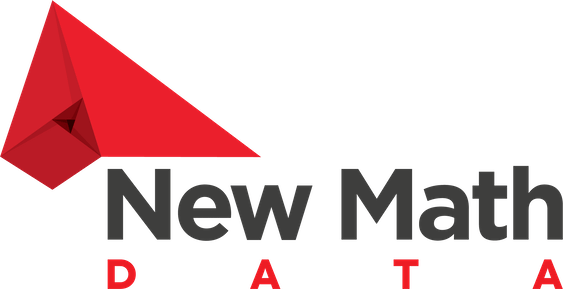TL;DR
Building in the cloud? Make sure your workloads aren’t held together with duct tape and wishful thinking. The AWS Well-Architected Framework helps you design reliable, secure, cost-effective systems by following six key principles: Operational Excellence, Security, Reliability, Performance Efficiency, Cost Optimization, and Sustainability. Use the AWS Well-Architected Tool to review workloads, tailor assessments with lenses and templates, and track progress with milestones. Keep reviews tight by narrowing scope, iterating improvements, and making it a regular part of your workflow. At New Math Data, we run these reviews all the time — if you need help, you know where to find us! 🚀
Introduction
As organizations rely more on cloud services to host applications and manage operations, ensuring workloads are secure, reliable, cost-efficient, and sustainable is critical. AWS offers the Well-Architected Framework to help engineers and managers design, implement, and review cloud workloads using industry best practices. Adopting these guidelines helps teams avoid common issues, improve operations, and create scalable, resilient solutions. The AWS Well-Architected Tool simplifies the process by providing a structured way to address challenges during workload planning and evaluate existing workloads for continuous improvement.
The Six Pillars of the Well-Architected Framework
The AWS Well-Architected Framework is built on six foundational pillars:
- Operational Excellence: Emphasizes automation, monitoring, and iterative process improvements. Example: Using AWS CloudFormation and AWS Systems Manager to automate deployments and operational tasks, reducing manual effort and risk.
- Security: Focuses on risk assessments, identity management, and protecting systems and data. Example: Implementing AWS IAM with least privilege access, AWS Shield for DDoS protection, and AWS KMS for encrypting sensitive data.
- Reliability: Ensures consistent workload performance and mechanisms for failure recovery. Example: Designing workloads with AWS Auto Scaling and Amazon Route 53 health checks to automatically recover from failures.
- Performance Efficiency: Guides resource and architecture optimization for changing demands. Example: Using AWS Lambda for event-driven workloads to scale seamlessly based on demand without provisioning fixed capacity.
- Cost Optimization: Aims to manage costs by minimizing waste and selecting efficient solutions. Example: Leveraging Amazon S3 Intelligent-Tiering to automatically move infrequently accessed data to lower-cost storage classes.
- Sustainability: Encourages reducing environmental impact through energy-efficient practices. Example: Running workloads in AWS Regions powered by renewable energy (us-west-2 is my favorite) and optimizing compute usage with Graviton-based instances to reduce carbon footprint.
By addressing these pillars, organizations can design systems that are robust and adaptable to changing needs.
The Process of Performing a Review
Conducting a Well-Architected Review (WAR) involves assessing a workload against the Well-Architected Framework. The tool can be found in your AWS console search bar.

The process starts with defining the workload’s scope and gathering stakeholders, such as engineers and architects, familiar with its design. Using the Well-Architected Tool, the team answers structured questions across the six pillars to identify risks and areas for improvement. Each identified issue is evaluated for its potential impact, and recommended actions are documented. The process concludes with prioritizing tasks based on their criticality, allowing teams to implement changes effectively. This structured approach ensures workloads align with best practices and organizational objectives.
Workload Selection and Scope Definition
Selecting a workload for review requires narrowing the focus to a specific, well-defined set of resources and operations. A workload should represent a distinct application, service, or component fulfilling a specific business function. Narrowing the scope helps make the review actionable by concentrating on a manageable portion of the infrastructure. For example, instead of reviewing an entire platform, focus on a particular API, serverless application, or data pipeline. This targeted approach simplifies the assessment and ensures deeper analysis, enabling stakeholders to address risks and improvements effectively.
Lenses in the AWS Well-Architected Tool
Lenses in the AWS Well-Architected Tool add workload-specific questions to the standard review process. These questions focus on domains like AI/ML, serverless, or IoT, tailoring the review to unique use cases. Custom lenses can also be created to include company-specific considerations. By incorporating relevant questions, lenses provide a more comprehensive evaluation of specialized workloads while maintaining alignment with the framework’s principles. Custom lenses that contain questions you define can be added as well by following the AWS documentation.
Using Templates and Profiles for Tailored Reviews
The Well-Architected Tool supports tailored reviews through templates and profiles. Prebuilt templates allow teams to pre-answer non-applicable questions and add organizational context through pre-filled notes. Templates can also be customized with lenses for specific workloads, such as serverless applications or AI/ML workflows, aligning the review to the workload’s requirements. Profiles further enhance consistency by grouping workloads with similar characteristics and defining standardized review criteria. These tools streamline the review process, save time, and allow teams to focus on workload-specific risks and improvements.
Milestones
Milestones in the AWS Well-Architected Tool allow teams to track progress over time by capturing snapshots of workload reviews at different points. Each milestone represents a specific state of the workload assessment, enabling organizations to compare changes, monitor improvements, and evaluate how risk levels evolve as recommended remediations are implemented.

Leverage milestones at different phases of the journey and remember, this is an iterative process for improvement. Let the POC be imperfect, then evaluate, refactor and review the identified opportunities and repeat.
How New Math Performs Well-Architected Reviews
When New Math Data conducts a Well-Architected Review, we start by clearly defining the scope of the assessment, ensuring we focus on a specific workload rather than an overly broad system. We guide clients through structured procedural questions that may not be obvious in examining their environment, such as version control and CICD, and run books. During the review, we examine their AWS environment to identify common anti-patterns — such as security misconfigurations, inefficient resource usage, or reliability risks — that could impact performance or cost. Once the assessment is complete, we review the findings with the client, capture a Milestone for tracking progress, and collaboratively define a prioritized remediation plan addressing some or all of the risks identified. Finally, we execute remediation plan, ensuring their cloud architecture is optimized, resilient, and aligned with their business goals. We then update the WAR and capture another Milestone.
Final thoughts
Incorporating the Well-Architected Framework into your organization’s development and operational workflows promotes better cloud outcomes. Conducting reviews during the planning phase, and using them as acceptance criteria helps teams address potential issues proactively and align with cloud best practices. Regular milestone reviews of existing workloads maintain adherence to the framework, fostering continuous improvement and operational excellence. Embracing the framework is a strategic step toward building resilient, efficient cloud architectures that meet business needs.
At New Math Data we perform many well-architected reviews for our current and potential customers. Comment below your own takeaways from your well-architected reviews, or reach out on our website to have us help you with one!

